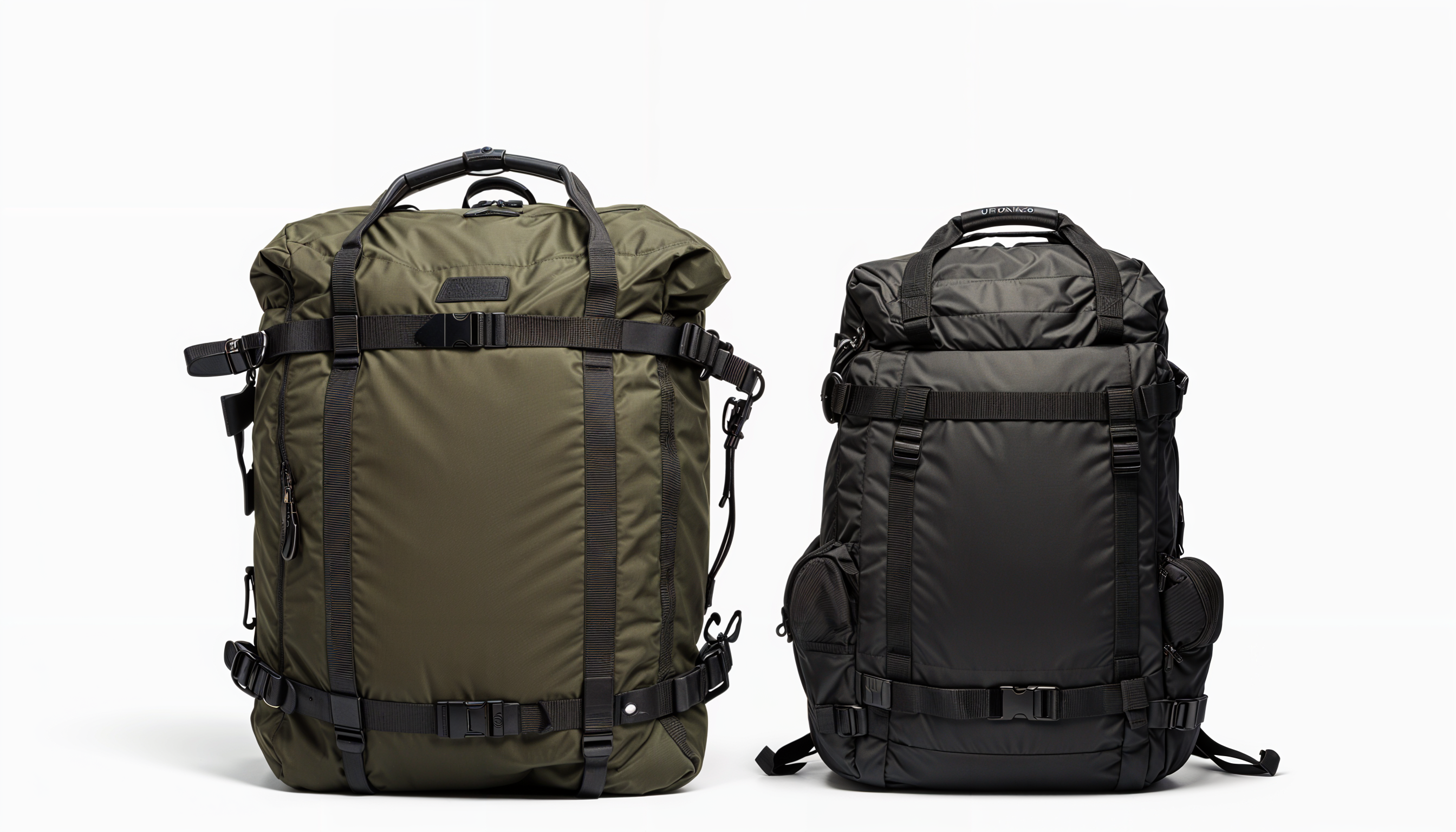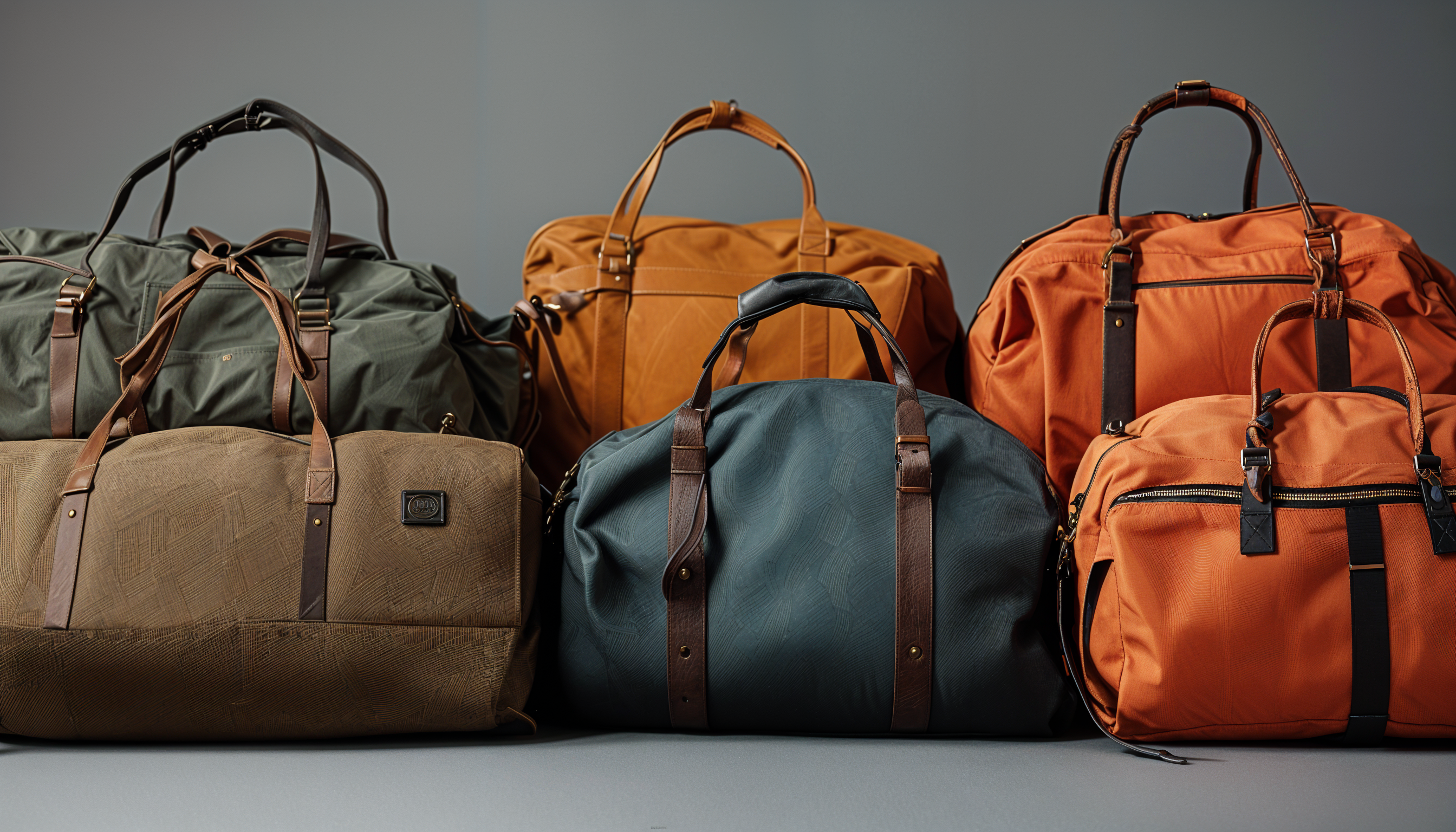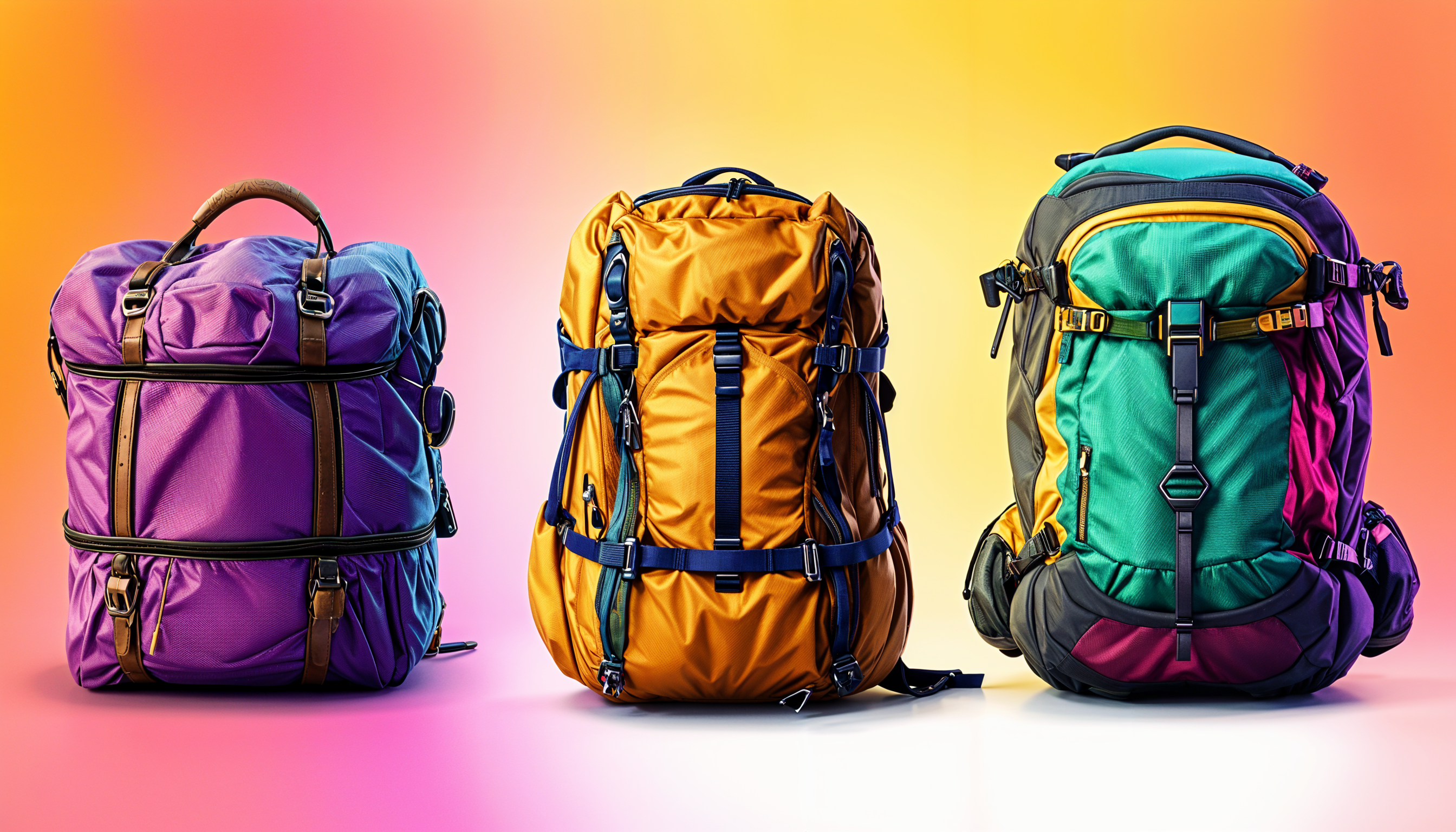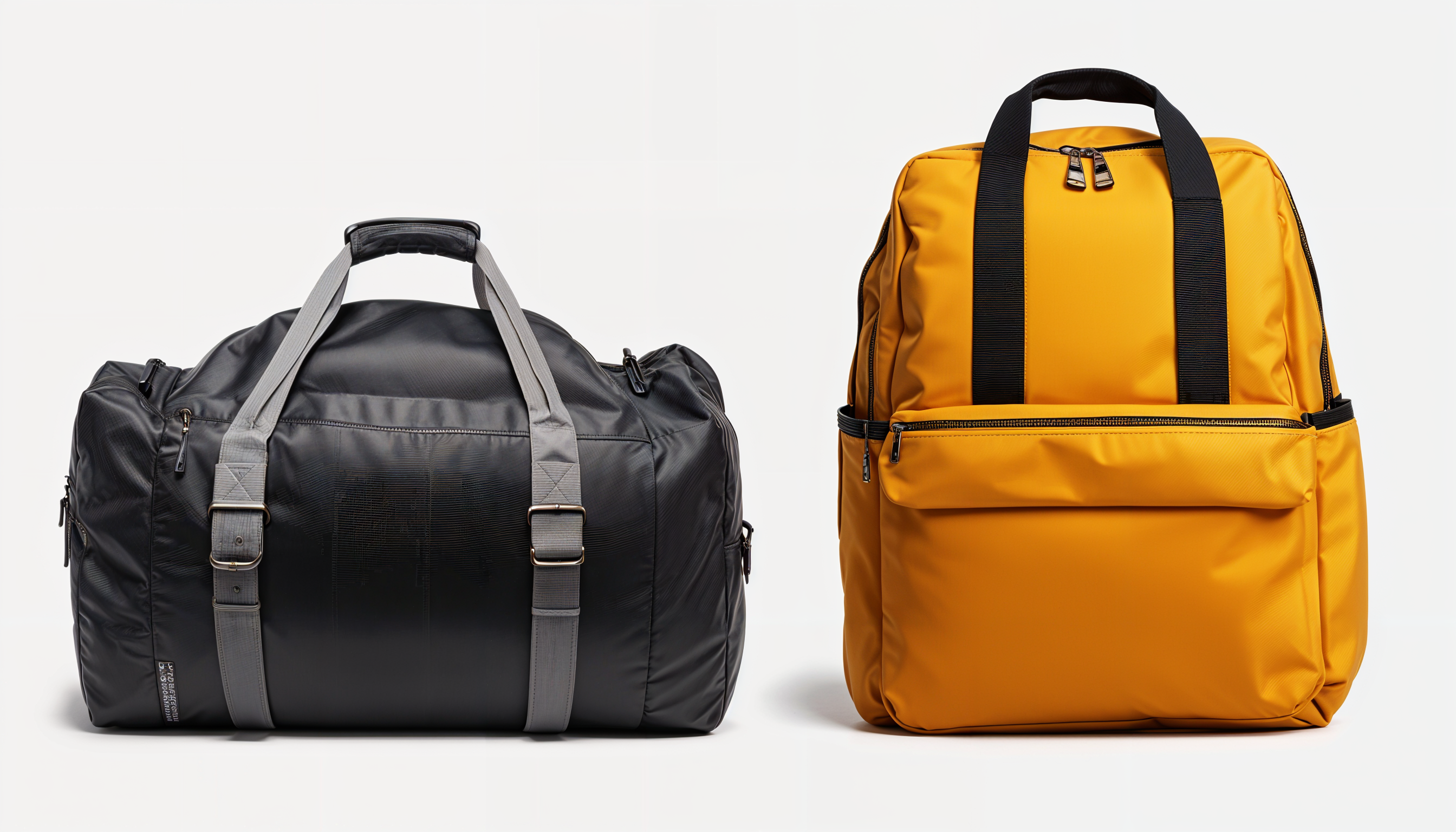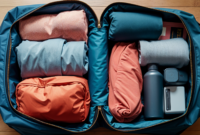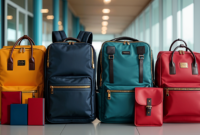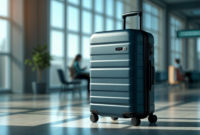More and more, travelers are ditching the bulky suitcase in favor of more versatile options like duffel bags and backpacks. But when it comes to packing for a short trip, the choice between these two popular travel companions can be surprisingly tricky. Both offer unique advantages and disadvantages, leaving many travelers wondering which bag will best suit their needs. Your ideal travel bag depends on a variety of factors, including the length of your trip, your travel style, and your individual packing preferences. This article will delve into a comprehensive comparison of duffel bags and backpacks, exploring their strengths and weaknesses across various aspects to help you make an informed decision for your next adventure.
Travel Backpacks: An Overview
Travel backpacks are designed specifically for the needs of travelers, offering a convenient and often comfortable way to carry your belongings. Whether you’re heading on a weekend getaway or a longer adventure, understanding the features and benefits of travel backpacks can help you decide if they’re the right choice for your next trip.
Travel backpacks come in a variety of sizes, materials, and styles. They typically feature padded shoulder straps and often include a hip belt and chest strap for better weight distribution and comfort, especially when carrying heavier loads. Capacity is measured in liters (L), with backpacks ranging from small daypacks around 20L to larger packs exceeding 60L for extended trips. Common materials include durable and water-resistant nylon or canvas. Some backpacks have internal frames for added support and structure, while others are frameless for lighter weight and flexibility.
You’ll find travel backpacks designed for specific purposes or that offer multi-functional use:
- Hiking Backpacks: Built for rugged outdoor adventures, these prioritize comfort and weight distribution under heavy loads. They often feature external attachment points for gear, water bottle pockets, and robust frames.
- Carry-on Backpacks: Designed to meet airline size restrictions, these maximize packing space while remaining compact enough to carry onto a plane. They often feature dedicated compartments for laptops and electronics.
- Multi-functional Backpacks: These blend travel-specific features with everyday functionality. For example, Knack Packs offer expandable suitcase compartments alongside laptop sleeves and organizational pockets, making them suitable for both travel and daily use.
Some popular travel backpack brands and models include:
- Knack Packs: Known for their sleek design, expandable packing compartments, and comfortable shoulder straps that can be tucked away for briefcase-style carrying. The Series 2 bags are a popular choice.
- Osprey Farpoint/Fairview: Available in various sizes, these backpacks are designed specifically for travel with features like a zip-away harness and hip belt, lockable zippers, and multiple compartments.
- Tortuga Setout: Designed for carry-on travel, these backpacks prioritize organization and packing efficiency with features like a lay-flat opening, dedicated laptop sleeve, and multiple pockets.
- Ortlieb Atrack: This waterproof and rugged backpack is built for adventure travel with a durable, tear-resistant fabric, a waterproof TIZIP zipper, and a modular strap system for attaching gear like skis or snowboards.
Pros of Travel Backpacks for Short Trips:
- Comfort: The padded shoulder straps and weight distribution features make them comfortable to carry, even for extended periods, especially compared to single-strap duffel bags.
- Organization: Multiple compartments and pockets help you keep your belongings organized and easily accessible.
- Mobility: Hands-free carrying allows you to navigate crowded spaces like airports or train stations with ease and provides better agility for activities like hiking or sightseeing.
- Security: Some backpacks offer lockable zippers for added security, deterring theft and preventing unwanted access to your belongings.
Cons of Travel Backpacks for Short Trips:
- Limited Space: Compared to duffel bags or suitcases, backpacks may offer less packing space, potentially restricting the amount of gear you can bring.
- Back Strain: Overpacking or improper wearing can lead to back pain, especially if you’re carrying a heavy load.
- Formal Setting Suitability: Backpacks may be perceived as too casual for business trips or formal occasions where a suitcase or briefcase might be more appropriate.
- Accessibility: Accessing items may require unpacking from the top or front, which can be less convenient than a suitcase with a wide clamshell opening.
Duffel Bags: A Practical Choice
Duffel bags are a classic luggage choice known for their simple yet effective design. Characterized by their cylindrical or rectangular shape, these bags are typically made from durable materials like canvas, nylon, or polyester. A spacious main compartment, often secured with a drawstring or zipper closure, provides ample room for your belongings. Most duffel bags feature an external pocket for quick access to smaller items, and carrying options vary from a single shoulder strap to dual handles and even wheels.
Exploring the Variety of Duffel Bags:
Duffel bags have evolved beyond the basic design to cater to diverse travel needs. Here are some common types:
- Traditional Duffel Bags: These are the simplest form, offering a large main compartment and minimal external pockets. They are typically carried using a shoulder strap or two handles. While spacious, they can be less comfortable for carrying heavy loads over long distances.
- Wheeled Duffel Bags: Combining the spaciousness of a duffel with the convenience of wheels, these are ideal for transporting heavy loads on smooth surfaces like airport floors. However, they can be cumbersome on uneven terrain or when needing to be carried up stairs. Popular options include the Patagonia Black Hole Wheeled Duffel and the Osprey Transporter Wheeled Duffel.
- Duffel Bags with Backpack Straps: These offer the best of both worlds, providing the option to carry the bag like a backpack for better weight distribution and comfort, especially for longer distances or heavier loads.
- Convertible Duffel Bags: These hybrid bags blur the lines between a duffel and a travel backpack. They often feature backpack straps that can be tucked away, multiple compartments for organization, and even dedicated laptop sleeves. The Knack Convertible Duffel is a prime example, offering expandability up to 40L and versatile carrying options.
Popular Duffel Bag Brands and Models:
The market offers a wide range of duffel bags to suit different budgets and travel styles. Some popular brands and models include:
- REI Co-op Roadtripper Duffel: A budget-friendly option made from durable polyester, ideal for weekend trips or gym visits.
- Patagonia Black Hole Duffel: Known for its ruggedness and weather resistance, this versatile duffel is suitable for a variety of travel scenarios, from camping trips to international adventures.
- The North Face Base Camp Voyager Duffel: Available in various sizes and colors, this duffel offers a good balance of durability, functionality, and style.
- Eagle Creek Migrate Duffel: This duffel is designed with sustainability in mind, using recycled materials and featuring a durable construction for long-lasting use.
Duffel Bags for Short Trips: Weighing the Pros and Cons:
Advantages:
- Spaciousness: Duffel bags excel at providing ample packing space, making them a great choice for short trips where you need to carry a decent amount of gear, especially if you’re not a light packer.
- Versatility: Their simple design and flexible shape allow them to be easily stowed in overhead bins, car trunks, or tight spaces, making them adaptable to various travel situations.
- Ease of Packing: The wide, open-top design of most duffel bags makes packing and unpacking a breeze compared to backpacks, where you often have to dig through layers to find specific items.
Disadvantages:
- Limited Organization: Traditional duffel bags often lack internal compartments and pockets, which can make it challenging to keep your belongings organized and easily accessible. You might find yourself rummaging through the entire bag to find a small item.
- Carrying Comfort: Carrying a heavy duffel bag solely by the shoulder strap can strain your shoulder and back, especially over longer distances. Wheeled duffels or those with backpack straps can mitigate this issue.
- Not Ideal for Everyday Carry: While some duffel bags offer stylish designs, they are primarily intended for travel and may not be as practical or aesthetically pleasing for everyday use compared to a backpack or messenger bag.
Capacity and Organization: Which Bag Wins?
When you’re packing for a short trip, both capacity and organization are crucial for a smooth and enjoyable travel experience. You want to ensure you have enough space for all your essentials while keeping everything easily accessible and neatly organized. So, how do duffel bags and backpacks stack up in these crucial areas?
Generally, duffel bags offer a larger packing capacity compared to backpacks, especially when it comes to accommodating bulky or irregularly shaped items. Their single, spacious compartment allows you to pack more freely, making them ideal for carrying items like bulky sweaters, jackets, or even sports equipment. However, this open space can also become a jumbled mess if not packed strategically. Backpacks, on the other hand, often have a slightly lower overall capacity due to their structured design and multiple compartments. But this compartmentalization can be a blessing for organized packers, as it allows you to neatly separate and categorize your belongings. For example, you can easily designate a compartment for clothes, another for electronics, and a smaller pocket for toiletries.
Think about your typical packing style and the items you usually travel with. If you tend to pack a lot of clothing or need to carry larger items, a duffel bag might be the better choice. Imagine packing for a weekend ski trip – a duffel bag can easily accommodate your bulky ski jacket, pants, and base layers, while a backpack might struggle to fit everything comfortably. However, if you prioritize organization and prefer to keep your belongings neatly separated, a backpack might be a more suitable option. Consider a business trip where you need to carry your laptop, documents, and a change of clothes – a backpack’s dedicated compartments and pockets will keep everything organized and easily accessible.
When it comes to packing efficiency, both duffel bags and backpacks have their strengths and weaknesses. Duffel bags can be surprisingly efficient if you utilize packing cubes to compress clothing and strategically place heavier items at the bottom for stability. However, finding a specific item can become a treasure hunt if you haven’t packed thoughtfully. Backpacks, with their compartmentalized design, promote efficient packing by allowing you to allocate specific spaces for different item categories. This can minimize the need for extra packing organizers but might limit the overall space available for bulky items.
Accessibility is another important factor to consider. Duffel bags offer quick and easy access to the main compartment through their wide top opening, making it easy to grab what you need at the top. However, retrieving items buried deeper in the bag might require unpacking some of its contents. Backpacks can offer varied accessibility depending on their design. Some feature multiple access points – top, front, and side – allowing you to reach specific compartments without fully unpacking. Others might require unpacking from the top to reach items at the bottom.
To maximize space and organization in your duffel bag, consider using packing cubes to compartmentalize clothing and keep things tidy. Rolling your clothes instead of folding them can also save space and reduce wrinkles. Compression bags are great for bulky items like jackets or sweaters, and placing heavier items at the bottom will help maintain stability. For added organization, strategically use the outer pockets for frequently accessed items like your phone or wallet, and pack in order of need, with items you’ll need first placed closer to the top.
For backpacks, maximize space by choosing a model with expandable features or compression straps. Utilize all compartments effectively, assigning specific categories to each. Packing cubes can also be helpful for maximizing space within compartments and keeping clothes organized. To enhance organization, consider using a packing list to ensure you pack efficiently and can easily retrieve items when needed. Assign specific compartments for different item categories, and utilize smaller pockets for frequently used items like your phone, charger, or passport.
Comfort and Carry Style: Finding the Right Fit
When it comes to comfort, backpacks generally have the edge over duffel bags, especially for longer travel durations or heavier loads. This is primarily due to their ergonomic design, which focuses on evenly distributing weight and providing proper back support. Backpacks typically feature padded shoulder straps, a hip belt, and often a chest strap, all working together to spread the load across your body, minimizing strain on your shoulders and back. Research on load carriage has consistently shown that evenly distributing weight across both shoulders, as backpacks do, significantly reduces perceived discomfort and fatigue compared to carrying a load on one shoulder, which is common with duffel bags (Kinoshita, 1985).
Duffel bags, in their traditional form, often rely on a single shoulder strap or two handles for carrying. While this can be convenient for short distances or lighter loads, carrying a heavy duffel bag on one shoulder can lead to muscle imbalances and strain on your neck, shoulder, and back. Studies have shown that carrying loads exceeding 10% of your body mass on one shoulder can significantly increase discomfort in the neck and shoulders (Brackley et al., 2019).
Weight Distribution and Back Support: A Backpack’s Strength
The key to a comfortable carrying experience lies in how the bag distributes weight. Backpacks excel in this area, thanks to their design. Padded back panels and internal frames provide crucial support for your spine, promoting a more natural posture and reducing the risk of back pain, especially when carrying heavier loads.
A study by Harman et al. (2000) found that vertical load distribution in backpacks, where the weight is closer to the spine, is more comfortable than traditional designs, particularly at loads of 10% of body mass. Hip belts further enhance comfort by transferring some of the weight to your hips, reducing the strain on your shoulders and back. This is particularly beneficial for activities like hiking or walking long distances.
Duffel bags, on the other hand, typically lack structured back support and weight distribution features. While some duffel bags now incorporate backpack straps, they often lack the ergonomic design and padding found in dedicated backpacking backpacks. This can make them less comfortable for extended carrying, especially with heavier loads.
Strap Design and Carrying Styles: Versatility vs. Ergonomics
Backpack straps play a crucial role in comfort. Look for backpacks with wide, padded shoulder straps that are adjustable to fit your body type. Research indicates that longer straps on backpacks carrying heavier loads (15% of body mass) can actually lead to increased discomfort compared to shorter straps (Cholewicki et al., 1997). Adjustable chest straps and hip belts can further enhance comfort and stability by distributing the weight more evenly.
Duffel bags offer more versatility in carrying styles. You can carry them by hand using the handles, sling them over your shoulder with a single strap, or even opt for a duffel bag with backpack straps for a more ergonomic carrying experience. However, it’s important to note that duffel bags with backpack straps may not offer the same level of comfort and support as dedicated backpacks, especially for heavier loads or longer durations.
The choice of carrying style also depends on your travel environment and activities. Backpacks provide hands-free mobility, which is invaluable when navigating crowded airports, exploring cities, or engaging in activities like hiking. Duffel bags, particularly those with wheels, can be more convenient for rolling your luggage through airports or train stations. Ideally, a duffel bag should offer multiple carrying options – top carry handles, haul handles, and removable backpack straps – to provide maximum versatility for different travel situations.
Addressing Potential Strain and Discomfort
While backpacks generally offer superior comfort, it’s crucial to choose the right size and fit for your body type and pack it properly to avoid strain. Overpacking or wearing a backpack incorrectly can lead to back pain and discomfort. Similarly, carrying a heavy duffel bag solely by the shoulder strap can strain your shoulder and back.
When choosing between a backpack and a duffel bag, consider the nature of your trip and your priorities. Backpacks are generally recommended for longer journeys, heavier loads, and activities demanding mobility. Duffel bags are suitable for shorter trips, lighter loads, and when easy packing and spaciousness are prioritized over organization. By carefully considering your individual needs and travel style, you can choose the bag that offers the best fit and ensures a comfortable and enjoyable travel experience.
Mobility and Weight Distribution: Navigating Your Journey
When you’re traveling, especially on short trips, ease of movement and the ability to navigate various environments comfortably are paramount. Your choice of luggage can significantly impact your mobility and overall travel experience. Let’s explore how backpacks and duffel bags compare in terms of maneuverability and weight distribution, helping you determine which bag best suits your travel style and needs.
Backpacks are generally favored for their excellent mobility, particularly in crowded spaces. Their hands-free design allows you to move freely and easily through busy airports, navigate crowded streets, and handle other luggage or belongings without feeling restricted. Imagine rushing through a bustling train station to catch your connection – a backpack’s agility becomes a clear advantage.
Furthermore, backpacks are well-suited for walking, especially over longer distances or on uneven terrain. The even weight distribution across your shoulders and back, combined with the hands-free design, promotes better balance and reduces strain, making them ideal for exploring cities on foot or embarking on hiking adventures.
Duffle bags, on the other hand, can pose challenges in certain travel environments. Their lack of maneuverability, especially in crowded areas or on public transport, can be a drawback. Carrying a bulky duffel bag through a packed subway car or maneuvering it through narrow airplane aisles can be cumbersome.
Additionally, the tendency to carry a duffel bag on one shoulder can lead to uneven weight distribution, potentially causing strain and affecting your balance, especially when the bag is heavily packed. Studies have shown that carrying loads asymmetrically can negatively impact balance and increase trunk muscle activation (Brackley et al., 2019).
Weight distribution plays a crucial role in both comfort and maneuverability. Backpacks excel in this area, thanks to their ergonomic design. Padded shoulder straps, hip belts, and chest straps work together to distribute the weight evenly across your body, minimizing strain on any one area and promoting a more natural posture.
This balanced weight distribution also enhances stability, reducing the risk of falls or losing your balance, particularly when navigating uneven terrain or carrying heavier loads. Duffel bags, especially those with a single shoulder strap, often concentrate the weight on one side of your body, potentially leading to discomfort and imbalance.
When considering different modes of transportation, backpacks generally offer greater convenience. Their compact size and ability to be easily stowed in overhead compartments make them ideal for air travel, especially as carry-ons. They are also comfortable for walking and using public transport, allowing you to keep your hands free for tickets, maps, or holding onto railings.
Duffel bags can be a viable option for checked luggage due to their spaciousness, but their maneuverability limitations within the airport environment should be considered. Suitcases, with their wheels and trolley handles, are best suited for smooth surfaces like airport terminals and hotel lobbies, but they lack the versatility of backpacks for navigating stairs, uneven terrain, or crowded spaces.
Navigating tight spaces and uneven terrain requires specific techniques with each bag type. When maneuvering through narrow passages with a backpack, keep it close to your body to minimize its impact on your surroundings and utilize its slim profile to squeeze through gaps. Be mindful of the backpack’s height to avoid hitting overhead obstacles. With a duffel bag, carry it in front of you or close to your body to reduce its footprint. Utilize the duffle bag’s flexibility to squeeze it through tight spaces. If it has a cross-body strap, use it to keep your hands free for better navigation.
On uneven terrain, adjust backpack straps for a snug and secure fit to enhance stability. Consider using trekking poles or hiking staffs for added balance and support, especially with heavier loads. Engage your core muscles to maintain balance and reduce strain on your back. When navigating uneven terrain with a duffel bag, distribute the weight as evenly as possible, potentially using both shoulder straps if available. Proceed cautiously and maintain a lower center of gravity. A walking stick or trekking pole can provide added stability.
It’s worth noting that improper lifting and carrying techniques, especially with heavier luggage, can lead to injuries. Over 1,800 luggage-related shoulder injuries were reported in US emergency rooms between 2003 and 2017, with over 60% affecting women experiencing sprains, strains, or muscle tears (Brackley et al., 2019). When handling a duffel bag, pack smartly to avoid excessive weight. Lift with your legs, not your back, when picking it up.
Use both hands when carrying it by hand or utilize both shoulder straps if available. Take rest breaks when carrying heavy loads for extended periods. Avoid dragging the bag, especially on stairs. If your duffel bag has adjustable straps, shorten them for a snug fit in crowded areas and lengthen them for a more comfortable carry when walking with more space.
Remember to check airline regulations for carry-on luggage when choosing a duffel bag to ensure it complies with size and weight restrictions. If you’re traveling with multiple bags, distribute the weight evenly across your body to maintain a comfortable posture and prevent fatigue. You can carry the duffel bag on one shoulder and the other luggage in the opposite hand. By carefully considering your travel style, the environments you’ll be navigating, and the importance of weight distribution, you can choose the bag that best supports your mobility needs and ensures a smooth and enjoyable journey.
Versatility and Functionality: Adapting to Your Trip
When you’re packing for a short trip, versatility and functionality are key considerations. Your chosen bag should adapt to your itinerary and activities, providing convenient access to your belongings and accommodating any unexpected changes in your plans. Let’s explore how backpacks and duffel bags fare in terms of their adaptability to various travel scenarios.
Both backpacks and duffel bags offer versatility for different activities, but their strengths lie in different areas. Backpacks excel in functionality and comfort, especially for longer journeys and diverse activities. Their ergonomic design, with padded shoulder straps and often hip belts, ensures even weight distribution, making them ideal for activities like hiking, cycling, or exploring a new city on foot. Multiple compartments and pockets provide organized storage for essentials like water bottles, snacks, maps, and electronic devices.
Duffel bags, on the other hand, prioritize spaciousness and adaptability for packing diverse items. Their simple, often cylindrical design allows for efficient packing of bulky or irregularly shaped items, making them suitable for shorter trips or situations requiring larger capacity. For example, a duffel bag can easily accommodate sports equipment, camping gear, or extra layers of clothing for a weekend getaway. However, their lack of structured organization might require packing cubes or other organizers to keep belongings tidy and accessible.
When it comes to specific travel types, both backpacks and duffel bags have their niche. Duffel bags are well-suited for day trips due to their easy access and spacious main compartment. Imagine heading to the beach or going on a picnic – a duffel bag can easily hold your towel, sunscreen, snacks, and a change of clothes.
For outdoor adventures, specialized expedition duffels, like the Black Diamond StoneHauler, are designed for rugged use with durable, water-resistant materials and reinforced lashing points for securing gear to various modes of transport. Backpacks, with their comfortable carry and organizational features, are ideal for urban exploration. Multiple compartments and pockets allow you to efficiently store and access essentials like your phone, wallet, map, and camera while navigating city streets.
Several features enhance the functionality of both bag types. Backpacks generally offer superior organization with multiple compartments and dedicated pockets for electronics, documents, and smaller items. Duffel bags often have a simpler design with a single large compartment and limited pockets, potentially hindering organization for travelers who prefer structured packing. However, many duffel bags now incorporate features like internal mesh pockets, shoe compartments, or even dedicated laptop sleeves to improve organization.
Expedition duffels prioritize functionality with features like reinforced lashing points and compression straps. These additions enable secure attachment to various modes of transport (e.g., pulk sleds, pack mules) and allow for compact packing and load stabilization during travel. Compression straps, both internal and external, are valuable features in duffel bags, helping secure and compact the load, minimizing shifting during travel. This feature is particularly beneficial for loads that don’t entirely fill the bag, preventing items from jostling around and maintaining a more manageable shape.
Adaptability to changing travel needs is another crucial aspect. Duffel bags, with their flexible and soft structure, adapt well to changing travel needs. They can be easily squeezed into tight spaces (overhead bins, car boots) and accommodate overpacking more readily than rigid suitcases. Their simple design makes them suitable for various travel lengths and purposes.
Hybrid bags like the Knack Convertible Duffel offer the best of both worlds by combining the spaciousness of a duffel with the functionality of a backpack. These adaptable designs feature removable backpack straps, multiple compartments, and expandable storage, catering to diverse travel styles and needs.
Ultimately, the choice between a backpack and a duffel bag for versatility and functionality depends on your individual travel style and the specific demands of your trip. Consider the activities you’ll be engaging in, the environments you’ll be navigating, and the importance of organization and accessibility when making your decision.
Style and Design: Expressing Your Travel Persona
Beyond practicality, your travel bag is an extension of your personal style, reflecting your travel persona and preferences. When choosing between a backpack and a duffel bag, consider how the aesthetics of each align with your individual taste and the overall image you want to project.
Backpacks: From Urban Chic to Outdoor Ruggedness
Backpacks offer a diverse range of styles to suit various tastes. You can find sleek, minimalist designs with clean lines and muted colors, perfect for the urban traveler who values a sophisticated and understated look. Materials like nylon and canvas contribute to this modern aesthetic, offering durability and a lightweight feel. On the other end of the spectrum, backpacks embrace a rugged, outdoorsy aesthetic, often featuring bolder colors, multiple pockets, and durable, weather-resistant materials. This style appeals to adventurers and hikers who prioritize functionality and a sense of exploration.
Duffel Bags: Timeless Classics and Modern Twists
Duffel bags exude a timeless, classic appeal, often associated with a sense of effortless cool. Traditional canvas or leather duffels evoke a vintage charm, perfect for travelers who appreciate a sense of history and durability. Leather, in particular, develops a unique patina over time, adding character and a touch of sophistication to your travel ensemble. However, duffel bags aren’t limited to the classic look. Modern designs incorporate vibrant colors, unique patterns, and innovative materials, offering a fresh take on this traditional luggage style.
Handles and Straps: Comfort Meets Style
The handles and straps of your travel bag contribute significantly to both comfort and style. Backpacks typically feature padded shoulder straps for ergonomic carrying, but the design and material of these straps can vary widely. Leather straps add a touch of luxury, while canvas or woven fabric straps offer a more casual and sporty vibe.
Duffel bags often come with two sturdy handles for hand carrying, but many also incorporate a shoulder strap or even backpack-style straps for added versatility. Consider the width and material of the straps, as wider straps generally offer better weight distribution and comfort, while thinner straps might prioritize style over practicality.
Finding Your Travel Style: A Reflection of You
Ultimately, the best travel bag is the one that best reflects your personal style and complements your travel aesthetic. If you gravitate towards a minimalist and sophisticated look, a sleek, black backpack or a leather duffel might be your ideal companion. If you’re an adventurous spirit who embraces bold colors and patterns, a brightly colored backpack or a patterned duffel bag could be a better fit.
Consider your packing habits as well. If you’re a light packer who values organization, a backpack with multiple compartments might suit you best. If you tend to pack more and prioritize easy access, a duffel bag’s spaciousness might be more appealing.
Your travel context also plays a role. A sleek backpack might be perfect for navigating city streets and blending into urban environments, while a sturdy duffel bag might be more at home on a rugged outdoor adventure. By carefully considering your personal style, packing preferences, and the nature of your trip, you can choose a travel bag that not only serves its practical purpose but also expresses your unique travel persona.
Choosing the Right Bag: A Personalized Approach
Choosing between a backpack and a duffel bag for your next short trip isn’t a one-size-fits-all decision. The ideal travel companion depends on your individual needs, travel style, and the specific demands of your journey. This section will guide you through a personalized approach to choosing the right bag, ensuring a comfortable and efficient travel experience.
Key Factors to Consider:
Several key factors influence your decision:
- Trip Duration: How long will you be traveling?
- Packing Habits: Are you a light packer or do you tend to bring more items?
- Comfort Preferences: How important is weight distribution and back support?
- Mobility Requirements: Will you be navigating crowded spaces or engaging in activities requiring agility?
- Travel Style: Are you embarking on an adventurous backpacking trip, a relaxed weekend getaway, or a formal business trip?
Backpack vs. Duffel Bag: A Recap of Strengths and Weaknesses:
Backpacks:
- Strengths: Excellent comfort and weight distribution, versatile for various travel styles, well-organized compartments for easy access, hands-free mobility ideal for navigating crowded areas and activities.
- Weaknesses: Potentially limited capacity compared to duffel bags, accessing items may require unpacking from the top.
Duffel Bags:
- Strengths: Spacious storage capacity, easy access to belongings through a single compartment, often stylish and classic look.
- Weaknesses: Can be uncomfortable to carry on one shoulder, limited organization features, can restrict movement in crowded spaces.
[Duffel Bags]
Decision-Making Framework:
- Evaluate Your Trip: Consider the duration, activities, and travel environment.
- Assess Your Packing Needs: Determine the volume and type of items you need to carry.
- Prioritize Comfort and Mobility: Decide how important weight distribution, back support, and hands-free carrying are.
- Consider Your Style: Choose a bag that reflects your personal aesthetic and travel persona.
Specific Recommendations:
- Weekend Getaway: A Duffel bag, especially around 40 liters, offers ample space and easy packing for a short trip. Consider a duffel with wheels if you’ll be primarily on smooth surfaces.
- Backpacking Trip: A travel backpack with padded straps, back support, and organizational features is essential for comfort and functionality during extended backpacking adventures.
- Business Travel: A duffel bag can be a stylish and practical option for carrying clothes and essentials for a short business trip. Consider a duffel with wheels for added convenience or a convertible duffel with backpack straps for versatility.
Decision-Making Matrix: Backpack vs. Duffel Bag
| Feature | Backpack | Duffel Bag |
|---|---|---|
| Capacity | Moderate | High |
| Organization | Excellent | Limited |
| Comfort | Excellent | Moderate (can be improved with backpack straps) |
| Mobility | Excellent | Moderate |
| Versatility | High | Moderate |
| Style | Varies (urban to rugged) | Classic to modern |
| Ideal for | Longer trips, adventure travel, urban exploration | Shorter trips, weekend getaways, carrying bulky items |
The Bottom Line: Your Perfect Travel Companion
As your journey through the world of backpacks and duffel bags comes to a close, it’s clear that the “perfect” travel companion is a deeply personal choice. The ideal bag isn’t a universal solution but rather a reflection of your individual needs, travel style, and the unique demands of your adventures. Remember that the right bag can significantly enhance your travel experience, making it smoother, more comfortable, and ultimately, more enjoyable.
When making your decision, prioritize your own comfort and preferences. Consider the length of your trip, your packing habits, the types of activities you’ll be engaging in, and the environments you’ll be navigating. If you value organization and hands-free mobility, especially for longer journeys or activities like hiking, a backpack might be your best bet. If spaciousness and easy access to your belongings are paramount, particularly for shorter trips or when carrying bulkier items, a duffel bag could be the ideal choice.
Ultimately, the best travel bag is the one that seamlessly integrates into your travel style and empowers you to explore the world with confidence and ease. Choose wisely, and may your chosen companion accompany you on countless unforgettable adventures.

